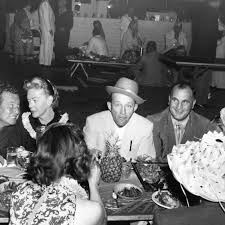Jimmy Carter, United States president from 1977 until 1981, reported seeing an unidentified flying object while at Leary, Georgia, in 1969. While serving as governor of Georgia, Carter was asked (on September 14, 1973) by the International UFO Bureau in Oklahoma City to file a report of the sighting, and he filed a statement on September 18, mailed September 20. Since its writing, the report has been discussed several times by both ufologists and by members of the mainstream media.
One evening in 1969, two years before he became Governor of Georgia, Carter was preparing to give a speech at a Lions Club meeting. He reported that at about 7:15 pm, one of the guests called his attention to a strange bright white object, about as bright as the moon, that was about 30 degrees above the horizon to the west of where they were standing. It moved toward their direction, but stopped beyond a stand of pine trees some distance from them. The object then changed color, first to blue, then to red, then back to white, before appearing to recede into the distance.
Carter felt that the object was self-illuminated, and not solid in nature. Carter's report indicates that it was witnessed by about 10 or 12 other people, and was in view for 10 to 12 minutes before it passed out of sight.
In 1973, Carter reiterated:
"There were about twenty of us standing outside of a little restaurant, I believe, a high school lunch room, and a kind of green light appeared in the western sky. This was right after sundown. It got brighter and brighter. And then it eventually disappeared. It didn't have any solid substance to it, it was just a very peculiar-looking light. None of us could understand what it was."
Speaking in a 2005 interview, Carter said:
"All of a sudden, one of the men looked up and said, 'Look, over in the west!' And there was a bright light in the sky. We all saw it. And then the light, it got closer and closer to us. And then it stopped, I don't know how far away, but it stopped beyond the pine trees. And all of a sudden it changed color to blue, and then it changed to red, then back to white. And we were trying to figure out what in the world it could be, and then it receded into the distance."
The exact date on which the sighting occurred has been called into question by investigators. According to the report that he filed with the International UFO Bureau four years after the incident, Carter saw the UFO in October 1969. However, investigators have cited Lions Club records as evidence that it occurred nine months earlier.
According to a meeting report that he filed with the Lions Club, Carter gave his Leary speech on January 6, 1969, not in October. The setting of his January meeting as described in his report to the Lions Club also matches the setting that he would later describe to the media when speaking about his sighting. His report to the Lions Club made no mention of the sighting itself...
The exact date on which the sighting occurred has been called into question by investigators. According to the report that he filed with the International UFO Bureau four years after the incident, Carter saw the UFO in October 1969. However, investigators have cited Lions Club records as evidence that it occurred nine months earlier.
According to a meeting report that he filed with the Lions Club, Carter gave his Leary speech on January 6, 1969, not in October. The setting of his January meeting as described in his report to the Lions Club also matches the setting that he would later describe to the media when speaking about his sighting. His report to the Lions Club made no mention of the sighting itself...







_edit.jpg)

.jpg)


.jpg)


.jpg)
.jpg)

.jpg)





.jpg)

.jpg)
.jpg)
.jpg)








.jpg)






